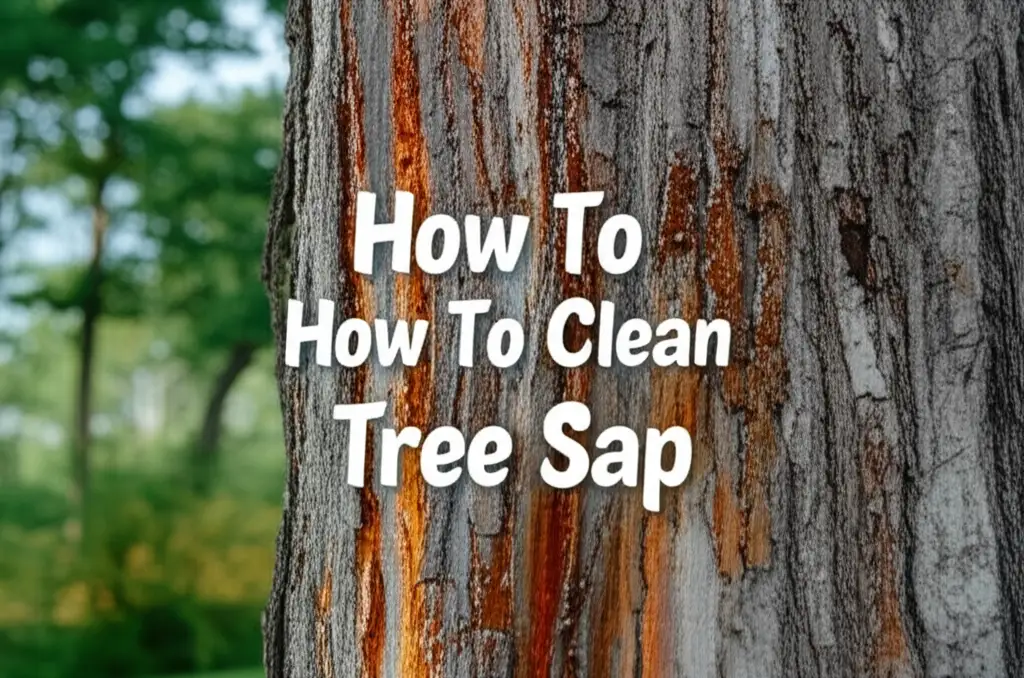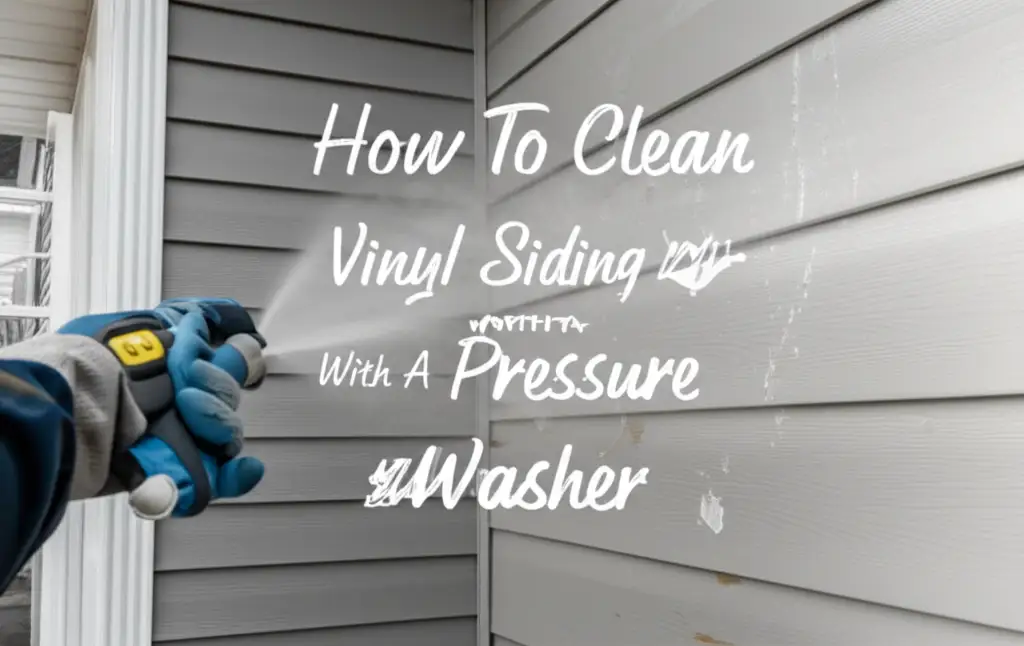· Home Maintenance · 19 min read
How To Clean Tree Sap

Unlock the Secrets: How to Clean Tree Sap Effectively
Tree sap can be a sticky, frustrating mess. It drips from trees, landing on cars, outdoor furniture, clothes, and even concrete. This common problem often leaves a sticky residue. You might wonder how to clean tree sap without damaging surfaces. I understand the challenge.
This guide offers proven methods for sap removal. We will cover various surfaces and cleaning agents. You will learn safe and effective techniques. Our goal is to help you restore your belongings to their clean state.
I will share tips for different situations. This article provides comprehensive solutions for sticky tree sap. We will tackle sap on vehicles, fabrics, and hard surfaces.
Takeaway
- Act quickly: Fresh sap is easier to remove.
- Test first: Always try any cleaning solution on an inconspicuous area.
- Choose the right solvent: Different surfaces need specific cleaning agents.
- Apply gently: Avoid harsh scrubbing that can damage finishes.
- Rinse thoroughly: Wash away all residue to prevent re-sticking or damage.
Quick Answer to Main Query
To effectively clean tree sap, first soften it with ice. Then, apply a suitable solvent like rubbing alcohol, mineral spirits, or a specialized sap remover. Gently wipe the sap away. Always test the cleaner on an hidden spot first. Finish by rinsing the area thoroughly.
Understanding Tree Sap and Its Stubborn Nature
Tree sap is a natural liquid produced by trees. It carries nutrients and sugars throughout the tree. Sap protects the tree from insects and fungi. It also helps heal wounds. When a tree branch breaks, sap oozes out. This creates a sticky, resinous substance. This stickiness makes sap hard to remove.
Different trees produce different types of sap. Pine trees, oak trees, and maple trees are common culprits. Their sap varies in consistency and stickiness. Some sap is thin and watery. Other sap is thick and tar-like. The age of the sap also matters. Fresh sap is softer and easier to clean. Old sap dries, hardens, and becomes very difficult to remove. It bakes onto surfaces, especially in sunlight. This makes it challenging to tackle.
Understanding sap’s properties helps in choosing the right cleaning approach. Sap is mostly organic compounds. These compounds are not water-soluble. This explains why water alone does not work. You need solvents or oily substances to dissolve it. These agents break down the sap’s chemical bonds. This allows you to wipe it away. Knowing this helps you choose effective cleaners. It also prevents frustration when facing a sticky mess.
Essential Tools and Solutions for Sap Removal
Removing tree sap requires specific tools and cleaning agents. Having the right supplies makes the job easier. It also helps prevent damage to surfaces. I always gather my materials before I start. This saves time and effort.
First, you will need soft cloths or microfiber towels. These are gentle on surfaces. They prevent scratching during the cleaning process. A plastic scraper or old credit card can help with thick, hardened sap. Use it carefully to lift the sap. Do not use metal scrapers, as they can scratch.
For cleaning solutions, several options exist. Rubbing alcohol (isopropyl alcohol) is a common choice. It dissolves many types of sap. Hand sanitizer also works because it contains alcohol. Mineral spirits (paint thinner) are effective for very stubborn sap. They are strong, so use them with caution. Acetone, found in nail polish remover, can dissolve sap quickly. However, acetone can damage some plastics and painted surfaces. Test it first.
Specialized commercial sap removers are also available. These products are formulated to dissolve sap. They are often safer for specific surfaces like car paint. Household items like peanut butter, mayonnaise, or olive oil can also work. Their oils help break down the sap. Ice cubes can harden sap, making it brittle and easier to chip off. Always choose your solution based on the surface you are cleaning.
Safety Precautions for Cleaning Tree Sap
Safety comes first when dealing with solvents. Many cleaning agents are flammable. They can also irritate skin or eyes. Always work in a well-ventilated area. Open windows or use a fan. Wear gloves to protect your hands. Safety glasses shield your eyes from splashes.
Keep cleaning products away from children and pets. Store them in a secure place. Read the product label carefully before use. It provides specific safety instructions. Test any new solution on an inconspicuous spot first. This checks for discoloration or damage. A small test area on car paint or fabric can prevent a big mistake. Different materials react differently to chemicals. For instance, strong solvents can strip wax from car paint. They might also discolor certain fabrics. Prioritize safety and proper application for best results.
How to Clean Tree Sap from Car Paint and Glass
Tree sap on a car is very common. It can be quite frustrating. Sap bakes onto the paint in the sun. This makes it even harder to remove. I always address sap on my car as soon as I notice it. Fresh sap is always easier to clean.
Removing Sap from Car Paint
Start by washing the car. This removes loose dirt and grit. It prevents scratching when you wipe the sap. Do not try to scrub dry sap. It will scratch the paint. If the sap is fresh, sometimes hot soapy water and gentle rubbing can remove it. For tougher sap, you need a solvent.
My go-to solution is rubbing alcohol. Dampen a soft microfiber cloth with rubbing alcohol. Gently dab the sap spot. Let the alcohol sit for a minute or two. This allows it to break down the sap. Then, gently wipe away the sap. Repeat this process if necessary. Do not rub too hard. Excessive rubbing can scratch the paint. After the sap is gone, wash the area with car soap and water. This removes any alcohol residue. Finally, apply car wax to the treated area. This protects the paint.
For extremely stubborn sap, a commercial car sap remover is an option. These products are specifically designed for car paint. They are usually very effective and safe. Another popular method uses WD-40. Spray a small amount on the sap. Let it sit for a few minutes. Then, wipe with a clean cloth. Always re-wax the area after using strong solvents.
Cleaning Sap from Car Glass
Cleaning sap from car windows is usually easier than paint. Glass is less porous. You can use similar methods. Rubbing alcohol works well on glass. Apply it to a cloth and wipe the sap. Another effective option is acetone (nail polish remover). Apply a small amount to a cotton ball. Gently rub the sap spot. Be very careful not to get acetone on painted surfaces. It can damage car paint quickly.
For a more natural approach, a mixture of vinegar and water can also work on glass. Vinegar is a mild acid. It can help loosen the sap. Mix equal parts white vinegar and water in a spray bottle. Spray the sap. Let it sit for a few minutes. Then, scrub with a soft brush or cloth. You can also use a razor blade scraper on glass. Hold it at a shallow angle. Gently push the sap off the glass. This method is effective but requires extreme care to avoid scratching. Finish by cleaning the glass with a standard glass cleaner. This removes any streaks or residue. For general glass cleaning, how to clean glass with vinegar offers more tips.
Effective Methods for Removing Tree Sap from Clothing and Fabric
Tree sap on clothes can seem like a disaster. It leaves a sticky, dark stain. But many effective methods exist to clean tree sap from fabric. The key is to act fast. Fresh sap is always easier to remove than dried sap. I have personally saved many shirts from sap stains.
Treating Sap on Clothing
First, scrape off any excess sap. Use a dull knife or the edge of a credit card. Be gentle to avoid damaging the fabric fibers. Do not rub the sap deeper into the fabric. Place the garment in the freezer for about 30 minutes. The cold will harden the sap. This makes it brittle. You can then often chip off more of the hardened sap.
Next, you need a solvent. Rubbing alcohol is very effective on most fabrics. Place the stained area face down on a clean paper towel. Apply rubbing alcohol to the back of the stain. The alcohol will dissolve the sap. The paper towel underneath will absorb it. Change the paper towel frequently as it gets saturated. Continue dabbing until no more sap transfers. For delicate fabrics, test the alcohol on an inconspicuous area first. Alcohol can sometimes affect certain dyes. Hand sanitizer also works as it contains alcohol.
Another effective method is using a greasy substance. Peanut butter, butter, or mayonnaise can break down the sap. Rub a small amount onto the sap stain. Let it sit for 10-15 minutes. The oils will penetrate and loosen the sap. Then, scrape off the excess. Apply a laundry pre-treater or dish soap directly onto the greasy spot. Launder the garment as usual, using the hottest water safe for the fabric. Check the stain before drying. If the stain remains, repeat the process. Drying the garment with the stain still present will set it.
Dealing with Sap on Upholstery and Outdoor Fabrics
Sap on furniture upholstery or outdoor cushions requires a gentle approach. You cannot just throw these items in a washing machine. Start by scraping off any excess sap. Use a plastic scraper. For outdoor cushions, you can often use ice to harden the sap.
For most upholstery, rubbing alcohol is the best choice. Dampen a clean white cloth with rubbing alcohol. Blot the sap stain. Do not rub, as this can spread the sap or damage the fabric. Continue blotting, using fresh sections of the cloth as needed. The alcohol should dissolve the sap. You might see the sap transferring to the cloth. Keep blotting until the sap is gone.
After the sap is removed, dampen another clean cloth with plain water. Blot the area to rinse away the alcohol residue. This prevents any rings or discoloration. For persistent stains on outdoor fabrics, a mild soap solution might help. Mix a few drops of dish soap with water. Apply this mixture to the spot. Gently scrub with a soft brush. Rinse by blotting with a damp cloth. Allow the fabric to air dry completely. Always test any cleaning method on a hidden part of the fabric first.
Cleaning Tree Sap from Hard Surfaces: Wood, Concrete, and More
Tree sap can land on many outdoor surfaces. Decks, patios, driveways, and outdoor furniture often become sticky targets. Removing sap from hard surfaces requires specific techniques. The approach depends on the material. I find that quick action is always best.
Removing Sap from Wood Surfaces (Decks, Furniture)
Wood surfaces are porous. Sap can soak into the grain. This makes it harder to remove. For fresh sap, try warm water and a mild soap. Scrub gently with a stiff brush. This might be enough if the sap has not set.
For dried sap on stained or sealed wood, mineral spirits can be effective. Apply a small amount to a clean cloth. Gently rub the sap spot. The mineral spirits will dissolve the resin. Wipe away the dissolved sap. Always work in a well-ventilated area. After removal, clean the area with mild soap and water. This removes any residue. You may need to reapply a wood sealer or stain to the treated area. This protects the wood and matches its finish. For general wood care, learning how to clean stains on wood can be helpful.
On unfinished wood, a stiff brush with hot soapy water might work. For stubborn spots, try sanding lightly after the sap is removed. This removes any remaining residue or discoloration. Then, apply a wood finish.
Cleaning Sap from Concrete and Pavement
Concrete driveways and patios often collect sap. Sap stains on concrete can be quite noticeable. For concrete, you have more options because it is a very durable surface.
Start by trying hot water and a stiff wire brush. Scrub the sap vigorously. This can remove fresh or moderately dried sap. For tougher sap, a pressure washer can be very effective. The high-pressure water stream can blast the sap away. Be careful not to damage the concrete surface with too much pressure.
If hot water and pressure washing are not enough, try a stronger solvent. Mineral spirits or denatured alcohol can dissolve sap on concrete. Apply the solvent to the sap. Let it sit for a few minutes. Then, scrub with a stiff brush. Rinse the area thoroughly with water. For general concrete issues, like mold, similar cleaning principles apply, as discussed in how to clean mold off concrete.
For very stubborn sap, a commercial degreaser designed for concrete can also work. Apply according to product instructions. Always rinse well to prevent residue.
Removing Sap from Plastic and Vinyl Surfaces
Outdoor furniture made of plastic or vinyl can also get sap on it. These surfaces are less porous than wood or concrete. This often makes sap removal easier.
For plastic or vinyl, rubbing alcohol or mineral spirits are good choices. Apply a small amount to a soft cloth. Gently wipe the sap away. These solvents typically do not harm plastic or vinyl. However, always test a small, hidden area first. Some types of plastic might react poorly to strong solvents.
Another simple trick is to use a non-abrasive cleaner. A mild dish soap solution with warm water often works on fresh sap. Use a soft sponge or cloth to scrub. For sticky spots, ice can help. Rub an ice cube over the sap to harden it. Then, gently scrape it off with a plastic scraper. Finish by rinsing the surface with water. Wipe it dry with a clean cloth.
Specialized Sap Removal Techniques and Products
Sometimes, common methods are not enough. Very old or stubborn sap stains need a stronger approach. There are also specialized products designed for tough sap. Understanding these options can save you time and effort.
Using Commercial Sap Removers
Many companies make specific products for removing tree sap. These are often labeled “tree sap remover” or “bug and tar remover.” They are formulated to dissolve sap safely. Many are designed for car paint, but some work on other surfaces too. Always read the product label. It tells you which surfaces are safe for that product.
To use a commercial remover, apply it to a clean cloth. Then, gently rub the sap spot. Most products require only light rubbing. The sap will dissolve and lift away. Some products suggest spraying directly onto the sap. Let it sit for a short time. Then, wipe it off. These products often contain powerful solvents. They are usually effective on hard, dried sap. After using, always rinse the area. You might need to wash the entire item. Follow the product’s specific instructions.
Natural and Less Conventional Methods
For those who prefer natural solutions, a few options exist. As mentioned, peanut butter or butter can dissolve sap. Their oils break down the sap’s resin. Apply a thick layer to the sap. Let it sit for 10-15 minutes. The oils will soften the sap. Then, scrape off the excess with a plastic scraper. Wipe the remaining residue with a clean cloth. Follow up with soap and water to remove the oil.
Another method involves using household oil, like olive oil or vegetable oil. Apply the oil to the sap spot. Gently rub with a cloth. The oil helps loosen the sap’s grip. This method is especially good for skin or pet fur. It is safe and non-toxic.
Hand sanitizer is also a handy tool. It contains alcohol, which dissolves sap. Squirt some hand sanitizer on the sap spot. Rub gently with a cloth. This works well for small sap spots on various surfaces. It is also good for hands.
Preventing Future Tree Sap Issues
Prevention is always easier than cleaning. If you park your car under trees, try to avoid pine or maple trees. These are notorious for dripping sap. Consider a car cover if you must park under sap-prone trees. This creates a barrier. It protects your car’s paint from sap.
For outdoor furniture, you can use outdoor furniture covers. These protect cushions and frames from sap. Regularly cleaning your outdoor items also helps. This prevents sap from hardening.
Trimming tree branches can reduce sap drips. If branches hang directly over your driveway or patio, consider trimming them. This might be a long-term solution. However, only trim trees if you know how. Hiring a professional arborist is safer for large branches. They can help maintain healthy trees. Learning about general tree care, like how to clean palm tree trunk, can also provide context on tree maintenance. A clean and healthy tree is less likely to cause sap problems.
Dealing with Stubborn Sap Stains and Residue
Sometimes, even after removing the bulk of the sap, a stain or sticky residue remains. This can be frustrating. Dried sap leaves a mark, especially on light-colored surfaces. Getting rid of this final trace requires persistence.
Tackling Persistent Sap Stains
For stains on car paint, often after the sap is gone, a dull spot or shadow remains. This is usually due to the sap etching the clear coat. A fine polish or rubbing compound can fix this. Apply a small amount to a foam applicator pad. Gently rub the affected area. This helps to buff out minor imperfections. Follow with car wax to protect the finish. If the etching is severe, professional detailing might be needed.
On fabrics, a ghost stain can appear. This often happens if the sap was very dark or if it contained dirt. Re-treating the stain with a strong laundry pre-treater is often the solution. Apply the pre-treater. Let it soak for a longer period, perhaps 30 minutes to an hour. Then, wash the item again in the hottest water safe for the fabric. Sometimes, several washes are needed. For specific stain types, like how to clean stains off walls, similar spot treatment principles apply.
For wood, if a stain persists, gentle sanding might be necessary. Use fine-grit sandpaper. Lightly sand the stained area. Feather the edges to blend it. Then, reapply the wood finish or stain. This usually works for localized stains.
Removing Sticky Residue
Even after the main sap is gone, a tacky feeling might linger. This residue can attract dust and dirt. A final cleaning step is essential.
For cars, after using a solvent, wash the entire car. This removes any leftover residue from the solvent itself. Then, apply a fresh coat of wax. The wax creates a smooth, non-sticky barrier.
On hard surfaces like plastic or concrete, a good rinse is key. Use a hose to spray down the area. You can also wipe with a cloth dampened with a mild soap solution. This removes any remaining stickiness. For concrete, a final scrub with a deck brush and water can ensure all residue is gone.
For fabrics, ensure the item is thoroughly washed. Use a good laundry detergent. Adding a cup of white vinegar to the rinse cycle can help. Vinegar acts as a natural softener. It also helps remove any lingering stickiness or chemical odors. Make sure the item feels completely clean before drying.
Remember, patience is crucial. Stubborn sap takes time. Sometimes, multiple treatments are needed to fully remove it. Do not rush the process. A gentle, methodical approach yields the best results.
FAQ Section
Q1: Can hot water alone remove tree sap?
A1: Hot water alone is usually not effective for removing tree sap. Sap is resin-based and not water-soluble. While very hot water might slightly soften fresh sap, it will not dissolve it. You need a solvent or an oily substance to break down the sap’s chemical structure for proper removal.
Q2: Is WD-40 safe for car paint to remove tree sap?
A2: WD-40 can be safe for car paint if used correctly and followed by a wash and wax. It helps dissolve sap. Spray a small amount on the sap, let it sit briefly, then wipe gently. Always wash the area with car soap and water immediately afterward. Reapply car wax to protect the paint’s clear coat.
Q3: What is the best way to remove old, hardened tree sap?
A3: For old, hardened tree sap, start by trying to freeze it with ice to make it brittle. Then, chip off as much as possible with a plastic scraper. Apply a strong solvent like mineral spirits, rubbing alcohol, or a commercial sap remover. Allow the solvent time to penetrate before gently wiping. Repeat as necessary.
Q4: Will rubbing alcohol damage fabric or clothing?
A4: Rubbing alcohol is generally safe for most common fabrics, but it can sometimes affect dyes or delicate materials. Always test rubbing alcohol on an inconspicuous area of the fabric first. Apply a small amount and check for color changes or damage before treating the main stain.
Q5: How do I prevent tree sap from dripping on my car?
A5: The best way to prevent tree sap on your car is to avoid parking under sap-producing trees, especially pine, oak, or maple. If you must park under them, use a full car cover. Regular car washing and waxing also provide a protective barrier against minor sap drips.
Q6: Can vinegar remove tree sap?
A6: Vinegar can help loosen some types of sap, especially on non-porous surfaces like glass. Its mild acidity can slightly break down the sap. For very stubborn or dried sap, vinegar might not be strong enough on its own. It works best as a supplementary cleaner after using a solvent or for light sap residue.
Conclusion
Cleaning tree sap might seem like a daunting task. With the right tools and methods, it becomes manageable. We have explored various effective ways to clean tree sap from different surfaces. Remember to always act quickly when you spot sap. Fresh sap is far easier to remove. Always test your chosen cleaning solution on a hidden area first. This prevents any accidental damage or discoloration.
Whether you are dealing with sticky car surfaces, stained clothing, or stubborn concrete spots, a solution exists. From rubbing alcohol and mineral spirits to natural alternatives like peanut butter, you have many options. Use soft cloths and gentle motions to protect your belongings. Once the sap is gone, finish with a thorough rinse or wash. This removes any residue and restores the surface. Maintaining your items after cleaning helps too. Regular waxing for cars, or applying a finish for wood, adds a protective layer. By following these steps, you can effectively clean tree sap and keep your things looking their best.
- tree sap
- how to clean sap
- remove tree sap
- sap removal
- car sap removal
- clothes sap removal
- deck sap cleaning
- sticky sap solutions
- natural sap removers
- sap stain removal




